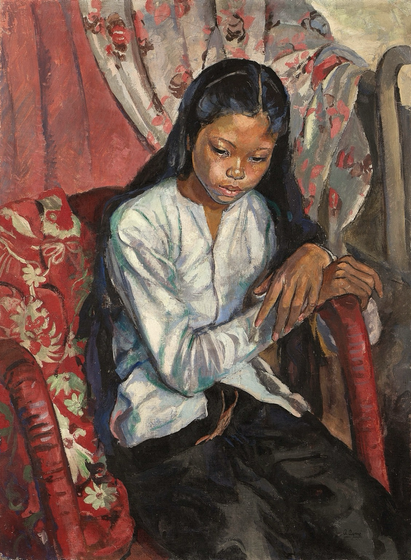Witness the artistic splendor of Southeast Asia with this ornate folio from a Kammavacha manuscript. The celestial beings and vibrant patterns elevate the spiritual essence of the Pali text. How do you think art influences the passage of sacred knowledge?
#ClevelandArt #BuddhistArt #SoutheastAsianArthttps://clevelandart.org/art/1945.172.12.a

Text, folio 12 (recto) from a Kammavacha: Buddhist ordination text | Cleveland Museum of Art
In premodern Burma, lay people commissioned lavishly ornamented manuscripts for ceremonial occasions, when officiants would read aloud from the text. Written in black lacquer, the text is in the language of Pali written in a Burmese script. It contains ordination rites and procedures for monastic ceremonies.<br> <br>The second to last page is covered with intricately drawn, winged celestial beings (<em>nats</em>) in gestures of praise. They fly amid intertwining vegetation—denoting bounty—that grows from serpentine forms that refer to rain clouds. Lionlike forms inhabit the space with them. The top and bottom covers are equally ornamented with jeweled floral patterning.
Portrait de Thi Ba, 1935
Painting by Alix Aymé (1894-1989), a French born artist who lived in China and French Indochine (Vietnam and Laos). Her In Laos, she became acquainted with the household of King Sisavang Vong, and her large frescos were displayed in the Royal Palace, Luang Prabang.
#alixaymé #art #artist #artworld #indochine #vietnam #laos #southeastasianart #frenchartist #asianart #worldofart #alixayme #portraitart #portrait #kunst #künstler #painter #peinture #artoftheday #paintingoftheday
Illumination from a Kammavacha showcases exquisite artistry and intricate storytelling in premodern Burma. Its celestial nats and floral motifs invite a closer look at its ceremonial significance. How do you interpret the blend of symbolism and craftsmanship?
#ClevelandArt #Buddhism #ArtHistory #SoutheastAsianArthttps://clevelandart.org/art/1945.172.16.a

Illumination, folio 16 (recto) from a Kammavacha: Buddhist ordination text | Cleveland Museum of Art
In premodern Burma, lay people commissioned lavishly ornamented manuscripts for ceremonial occasions, when officiants would read aloud from the text. Written in black lacquer, the text is in the language of Pali written in a Burmese script. It contains ordination rites and procedures for monastic ceremonies.<br> <br>The second to last page is covered with intricately drawn, winged celestial beings (<em>nats</em>) in gestures of praise. They fly amid intertwining vegetation—denoting bounty—that grows from serpentine forms that refer to rain clouds. Lionlike forms inhabit the space with them. The top and bottom covers are equally ornamented with jeweled floral patterning.




